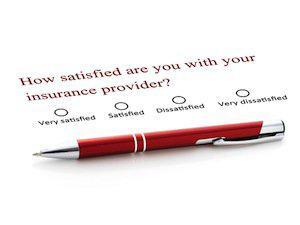
If you’ve been in a car accident, one of the things you might be most concerned about is how to pay your medical bills and cover other losses. Understanding what types of insurance might be available to you after a car crash is important.
Collision:
This is a type of coverage available to reimburse you for damage done to your vehicle during an accident. If the “at fault” party is insured, you can work with their insurance company to cover your property damage claim. However, it is also possible to work with your own insurance company to resolve any property damage claim you have if you had collision coverage. If you work with your own insurance company you may need to pay a deductible. However, if the other party is also insured, your insurance company, or an attorney, can work with the opposing insurance company to reimburse your deductible.
Medical Payments Coverage:
This is a type of coverage that is optional in Wisconsin. If you have medical payments coverage (often referred to as “Med Pay”) on your own auto policy, this will be available to you up to the paid-for limit of coverage to cover or reimburse uninsured medical expenses. It can be very important to work with an experienced personal injury attorney to best understand how to coordinate the various benefits or insurance coverages available when it comes to ensuring your medical bills are paid for and covered.
Health Insurance:
If you have health insurance, it should be available to you to cover your medical bills and expenses related to the injuries you sustained in the accident.
Liability Insurance:
This is how we typically refer to the at-fault driver’s auto insurance. Liability insurance is mandatory in Wisconsin, although that unfortunately does not guarantee that people will actually have the required coverage. The required limit for liability insurance in Wisconsin is incredibly low- $25,000. Liability insurance is available to cover your losses if you are injured in an accident or sustain other losses and can substantiate those losses.
Underinsured Motorist Coverage (UIM):
UIM coverage is optional in Wisconsin. UIM coverage is available in a situation where your losses exceed the available liability insurance limit and your UIM limit is greater than the limit of the underlying liability policy. In other words, let’s hypothetically say that you have $100,000 in medical bills. Assume also the at-fault driver has a $100,000 liability insurance limit. If you carry a $100,000 UIM policy, you would not actually have access to that coverage (because your UIM limit is equal to the underlying liability limit, even though your damages are clearly in excess of the underlying policy). If in this same hypothetical you carry $250,000 in UIM coverage, you would in most cases have access to your UIM coverage less the amount paid by the underlying policy (so with $250,000 in UIM coverage and an underlying liability policy of $100,000, you would have access to $150,000 in UIM benefits).
Uninsured Motorist Coverage (UM):
UM coverage is mandatory in Wisconsin. This is a type of insurance that would be available to you if you were injured in an accident by a driver who did not carry any insurance.
Call an Experienced Personal Injury Lawyer
At Herrling Clark Law Firm, Ltd., we understand just how significantly an auto accident can impact your life, and we strongly believe that victims deserve full and fair compensation. Dedicated to helping you get the most out of your settlement, we will stand up for your rights and protect your interests. Schedule a free initial consultation with our Appleton car accident attorneys to learn more. Call 920-739-7366 for an appointment today.
The post Understanding the Types of Insurance appeared first on Herrling Clark Law Firm.




